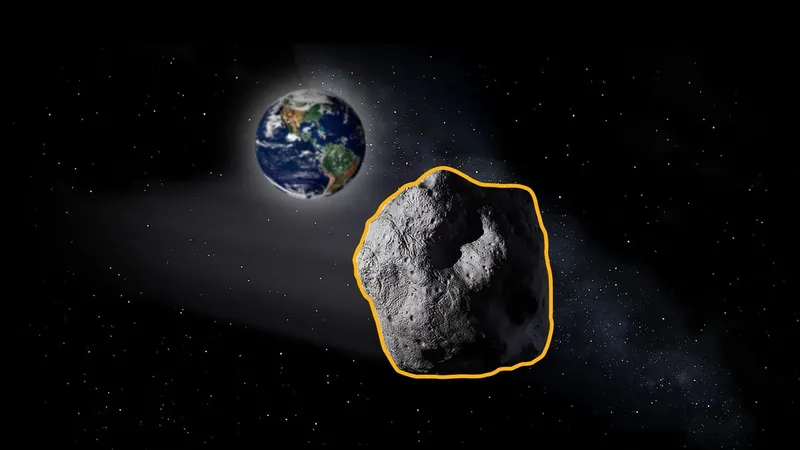
Asteroids: Daily Travelers of the Cosmos and Our Planet's Safety Plan!
2024-11-24
Author: Jacques
Every day, Earth shares its cosmic neighborhood with various asteroids, but fear not! The celebrated 'God of Destruction,' the asteroid Apophis, is projected to have a minuscule chance of striking our planet in 2029, standing at more than 1 in 2 billion, as reported by Space.com.
NASA's relentless quest to monitor near-Earth asteroids (NEAs) has led to the discovery of over 36,000 such bodies since these searches began. With advancements in telescope technology, the annual rate of new discoveries is expected to surge. As of now, in 2023 alone, Earth has encountered several notable close passes from large asteroids:
Close Passes from Large Asteroids in 2023
- **January 27**: 2024 BJ, **Size**: ~121 feet, **Distance**: approx. 220,000 miles. - **June 27**: 2011 UL21, **Size**: 1.1 to 2.4 miles, **Distance**: 4.1 million miles. - **June 29**: 2024 MK, **Size**: ~500 feet, **Distance**: 184,000 miles. - **September 15**: 2024 ON, **Size**: 720 feet, **Distance**: 620,000 miles.
Though these encounters seem close, they occur at staggering distances. To ensure our safety, NASA and the Jet Propulsion Laboratory (JPL) continue to keep a vigilant eye on these celestial objects to forecast their paths and assess potential threats. Asteroids larger than 330 feet are believed to hit Earth roughly every 10,000 years, but no significant impacts are anticipated soon.
But who are these asteroids? Most originate from the asteroid belt between Mars and Jupiter, where billions of them orbit the Sun. They vary dramatically in size, with some asteroids measuring less than 30 feet across to others like Vesta, which spans 330 miles in diameter—about the size of Arizona!
How is NASA gearing up for potential asteroid threats? Recent years have seen the agency launching serious initiatives aimed at planetary defense. A landmark moment occurred in September 2022, when NASA successfully crashed a spacecraft into the asteroid Dimorphos at around 14,000 mph. This mission, known as the Double Asteroid Redirection Test (DART), showcased our potential to alter an asteroid's trajectory and could be key if a significant threat were identified.
In addition, NASA is continuously reviewing its preparedness strategies. The Planetary Defense Coordination Office has organized numerous exercises, engaging around 100 global representatives to brainstorm responses to hypothetical asteroid threats. Furthermore, they are developing the NEO Surveyor telescope, aimed at detecting 90% of asteroids and comets within 30 million miles of Earth's orbit.
Stay tuned and keep your gaze to the sky! With ongoing advancements in our capabilities to track and potentially divert dangerous asteroids, humanity is better equipped than ever to protect our planet from these ancient travelers of the cosmos.









 Brasil (PT)
Brasil (PT)
 Canada (EN)
Canada (EN)
 Chile (ES)
Chile (ES)
 España (ES)
España (ES)
 France (FR)
France (FR)
 Hong Kong (EN)
Hong Kong (EN)
 Italia (IT)
Italia (IT)
 日本 (JA)
日本 (JA)
 Magyarország (HU)
Magyarország (HU)
 Norge (NO)
Norge (NO)
 Polska (PL)
Polska (PL)
 Schweiz (DE)
Schweiz (DE)
 Singapore (EN)
Singapore (EN)
 Sverige (SV)
Sverige (SV)
 Suomi (FI)
Suomi (FI)
 Türkiye (TR)
Türkiye (TR)